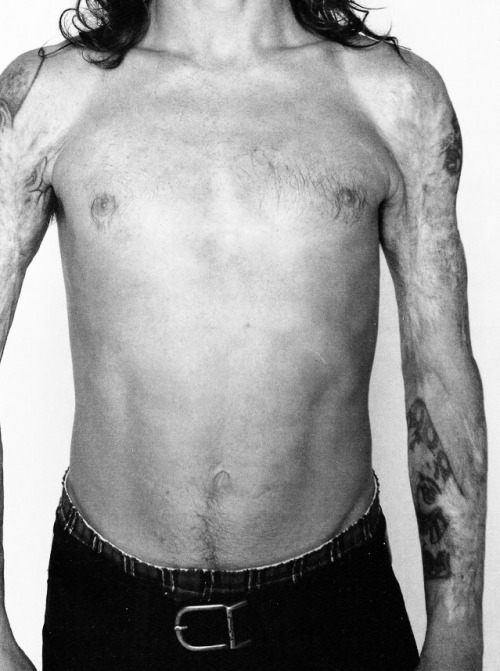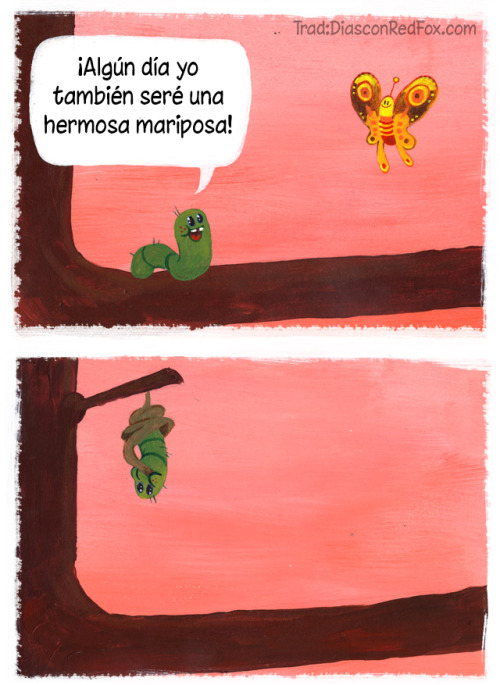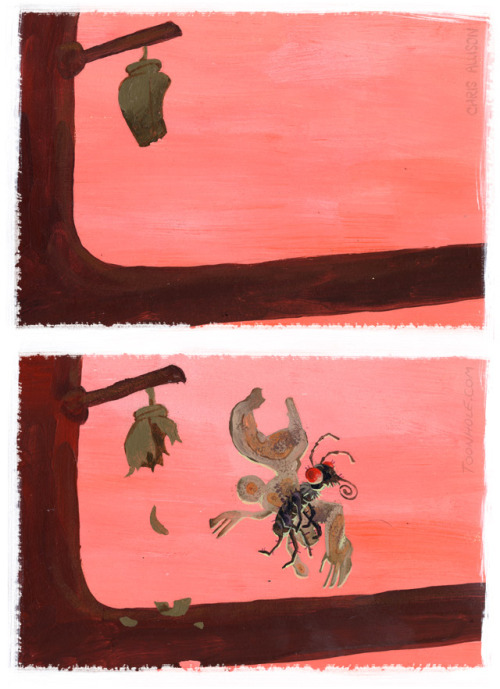“I Guess This Is The First Time In A Video That I Ever Showed My Arms Since My Arms Have Been Scarred,

“I guess this is the first time in a video that I ever showed my arms since my arms have been scarred, ’cause my arms are-are pretty badly scarred. I guess people are always wondering so I might as well say that, um, that the way that my arms got the way that they look, um, is was from abcesses, which came from shooting huge amounts of drugs. The results could have been a lot worse, so I’m happy to have the scars from a period of my life where I was living destructively, just as a… as a sign of what I’ve been through. And, uh, these days, I-I’m, you know, being healthy and taking care of my body is so important to me. But looking at it here, is seems like my arms have gotten better since then, so… That’s nice to see.”
-John Frusciante, during the shooting of californication
More Posts from Vaansk8 and Others

Por estas pequeñas cosas me encantan.



Halley’s Comet, observed on May 29, 1910 at the Yerkes Observatory, in Williams Bay, Wisconsin.

Paso las horas sin hablar, menos a veces, que me vuelvo loco. Y mi cabeza, ¿dónde está?: la estoy perdiendo de poquito en poco. Y al sonreír me has hecho otra vez soñar; ya no podía resistir esta puta realidad. Y harto ya de vivir, por dentro empezó a gritar, y nunca ya nadie le oyó decir ni una palabra más. (888

Levantarse, tomar el tranvía, cuatro horas de oficina o de fábrica, la comida, el tranvía, cuatro horas de trabajo, la comida, el sueño y lunes, martes, miércoles, jueves, viernes y sábado con el mismo ritmo es una ruta que se sigue fácilmente durante la mayor parte del tiempo. Sólo que un día se alza el «por qué» y todo comienza con esa lasitud teñida de asombro. «Comienza»: esto es importante. La lasitud está al final de los actos de una vida maquinal, pero inicia al mismo tiempo el movimiento de la conciencia. La despierta y provoca la continuación. La continuación es la vuelta inconsciente a la cadena o el despertar definitivo. Al final del despertar viene, con el tiempo, la consecuencia: suicidio o restablecimiento…
Albert Camus, El mito de Sísifo. (via etomniavanitas)
Y debo decir que confío plenamente en la casualidad de haberte conocido. Que nunca intentaré olvidarte, y que si lo hiciera, no lo conseguiría.
Rayuela - Julio Cortázar (via nathiinyaan)








Billy Meier’s controversial photographs of the UFOs, 1970s. Billy Meier is the source of many controversial photographs of alleged unidentified flying objects (UFOs), which he presents in support of his claim that he is in contact with extraterrestrial beings. Meier reports regular contacts with extraterrestrials; he calls the Plejaren. Meier claims that the Plejaren look similar in appearance to humans, that the Plejaren homeworld is called Erra, and that it is located in a dimension which is a fraction of a second shifted from our own dimension, about 80 light years beyond the Pleiades, an open star cluster. The Plejaren were given the name Pleiadians by Meier up to 1995. Meier claimed his first extraterrestrial contacts occurred in 1942 at the age of five with an elderly extraterrestrial man named Sfath. Contacts with Sfath lasted until 1953, shortly before Sfath died. From 1953 to 1964, Meier’s contacts continued with an extraterrestrial woman called Asket, who is not a Plejaren. Meier says that after an eleven-year break, contacts resumed again. He has claimed that he has also visited other worlds and galaxies along with another universe with these extraterrestrials. Many people still claim that Meier faked hundreds of UFO photos he has taken to achieve some form of personal fame and/or monetary gain for himself, despite the positive analyses performed by several competent scientists and photo experts. Most of these allegations are not even backed up by scientific research, or they contain false, distorted data. In addition, it is a known fact that numerous photos of Billy’s were carefully manipulated in the past to show strings and similar anomalies and were widely distributed in attempts to discredit him. However, the decision as to their authenticity ultimately lies with each and every individual.
-
 scinam94 liked this · 2 months ago
scinam94 liked this · 2 months ago -
 hoziersmom liked this · 2 years ago
hoziersmom liked this · 2 years ago -
 ciurluuu liked this · 3 years ago
ciurluuu liked this · 3 years ago -
 larissaligus liked this · 3 years ago
larissaligus liked this · 3 years ago -
 gaylittleguy liked this · 3 years ago
gaylittleguy liked this · 3 years ago -
 thousandyardstare liked this · 3 years ago
thousandyardstare liked this · 3 years ago -
 polpettaikea liked this · 4 years ago
polpettaikea liked this · 4 years ago -
 abbeyroadkid liked this · 4 years ago
abbeyroadkid liked this · 4 years ago -
 davegahanandmartingore liked this · 4 years ago
davegahanandmartingore liked this · 4 years ago -
 cweww reblogged this · 4 years ago
cweww reblogged this · 4 years ago -
 quailiolio liked this · 4 years ago
quailiolio liked this · 4 years ago -
 opossuwu reblogged this · 4 years ago
opossuwu reblogged this · 4 years ago -
 opossuwu liked this · 4 years ago
opossuwu liked this · 4 years ago -
 whitedeadflower liked this · 4 years ago
whitedeadflower liked this · 4 years ago -
 thegreatgumnut liked this · 5 years ago
thegreatgumnut liked this · 5 years ago -
 emilia1991 liked this · 6 years ago
emilia1991 liked this · 6 years ago -
 stand-awake liked this · 6 years ago
stand-awake liked this · 6 years ago -
 non-omnis-moriar-iris reblogged this · 6 years ago
non-omnis-moriar-iris reblogged this · 6 years ago -
 tortured-masterpiece reblogged this · 7 years ago
tortured-masterpiece reblogged this · 7 years ago -
 imaginaryhighways liked this · 7 years ago
imaginaryhighways liked this · 7 years ago -
 feverever56689 liked this · 7 years ago
feverever56689 liked this · 7 years ago -
 mercurialesbica reblogged this · 7 years ago
mercurialesbica reblogged this · 7 years ago -
 tashabil liked this · 7 years ago
tashabil liked this · 7 years ago -
 th3fragile liked this · 7 years ago
th3fragile liked this · 7 years ago -
 usuallyonlywater reblogged this · 7 years ago
usuallyonlywater reblogged this · 7 years ago -
 black-old-sun reblogged this · 7 years ago
black-old-sun reblogged this · 7 years ago -
 bukwyvrm liked this · 7 years ago
bukwyvrm liked this · 7 years ago -
 helliscallingbrb liked this · 7 years ago
helliscallingbrb liked this · 7 years ago -
 mot0wnjunk-archive liked this · 7 years ago
mot0wnjunk-archive liked this · 7 years ago -
 soundsofmyuniverse reblogged this · 7 years ago
soundsofmyuniverse reblogged this · 7 years ago -
 dreamgirl3vil8 liked this · 7 years ago
dreamgirl3vil8 liked this · 7 years ago -
 melancholysgirlfriend liked this · 7 years ago
melancholysgirlfriend liked this · 7 years ago -
 ashtoashesdusttodust reblogged this · 7 years ago
ashtoashesdusttodust reblogged this · 7 years ago -
 whatyoucan-tunderstand liked this · 7 years ago
whatyoucan-tunderstand liked this · 7 years ago -
 whatyoucan-tunderstand reblogged this · 7 years ago
whatyoucan-tunderstand reblogged this · 7 years ago -
 valladro reblogged this · 7 years ago
valladro reblogged this · 7 years ago -
 valladro liked this · 7 years ago
valladro liked this · 7 years ago -
 johnnyspocketbook-blog liked this · 7 years ago
johnnyspocketbook-blog liked this · 7 years ago -
 tano-padawan liked this · 7 years ago
tano-padawan liked this · 7 years ago -
 kris-mgp liked this · 7 years ago
kris-mgp liked this · 7 years ago -
 lolita-babygirl-cocaineluvr666 reblogged this · 7 years ago
lolita-babygirl-cocaineluvr666 reblogged this · 7 years ago -
 numberoneblind reblogged this · 7 years ago
numberoneblind reblogged this · 7 years ago -
 numberoneblind liked this · 7 years ago
numberoneblind liked this · 7 years ago